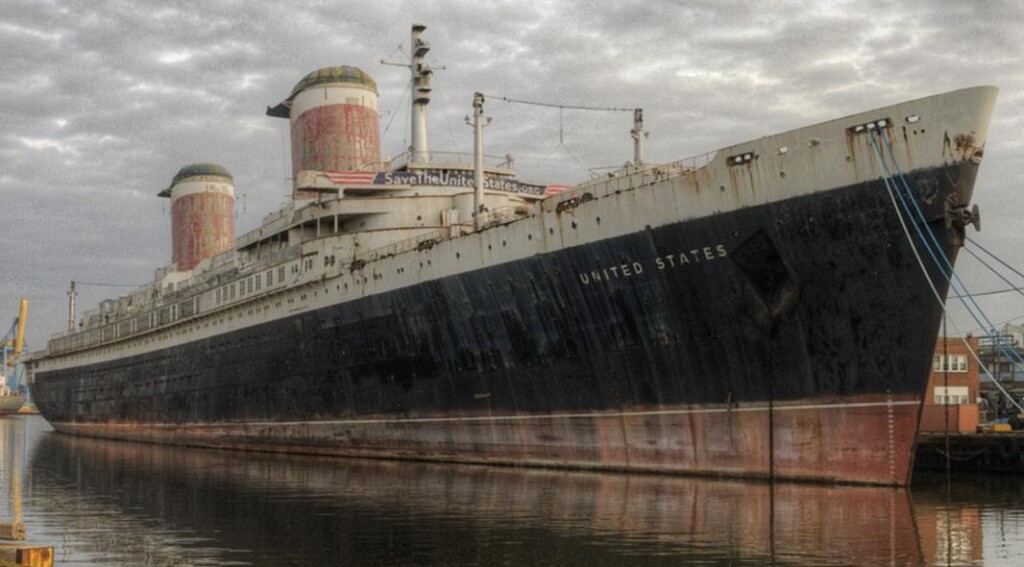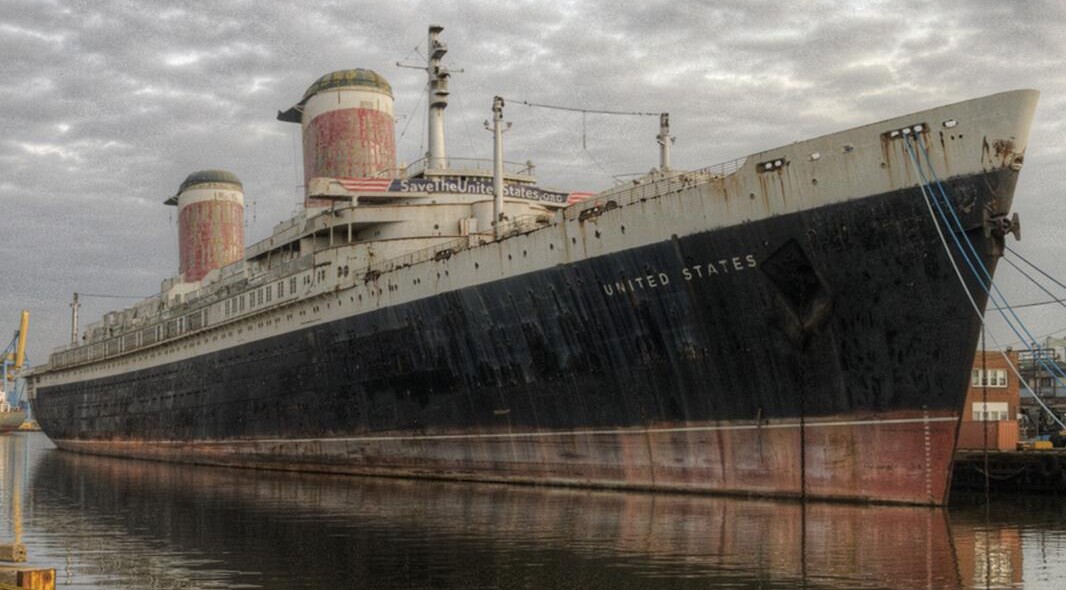
For decades, the SS United States has been moored off Philadelphia as a reminder of the nation’s seafaring past, but looking now to the future, it will be sunk to create a natural wonder—the world’s largest artificial reef.
While coral reefs are in danger worldwide, features like concrete blocks and shipwrecks can offer vital shelter and habitat to dozens of marine species, and many old vessels in many different countries have gone to rest in this way.
The United States was built in the 1950s with the aim of ferrying troops around the country in case of a war. After it proved unnecessary, it was converted to a luxury ocean liner that became the fastest vessel on the high seas, and it still holds the Transatlantic speed record.
Celebrities and heads of state like John F. Kennedy routinely promenaded along its decks, being shuttled to and from Europe, until 1967 when it was decommissioned, two years after the death of her chief designer and engineer.
Now, the Okaloosa County Board of County Commissioners has approved a contingent contract to see the United States off on her final voyage to Destin-Fort Walton Beach, Florida, where she would be sunk to join a collection of 500 other artificial reefs that provide a true spectacle for divers.
Two processes: a District Court mediation, and an environmental review, stand in the way of the conversion from liner to reef, but both are expected to conclude without issue.
The deal will “also come with money from the county to open a land-based museum dedicated to the ship, one that would be run by the conservancy,” reported the New York Times.
“To have an opportunity to have the SS United States right here by our shore is a heritage and a legacy that is generational,” said Okaloosa County Commissioner Mel Ponder. “I’m very excited for not only what it does for the diving community, but also the fishing community, but the community at large.”
FLORIDA REEFS: First-Ever Coral Crossbreeding Hopes to Mimic the Resilience of an ‘Invincible’ Reef in Honduras
The deal might cost as much as $10 million, as the ship is owned by the SS United States Conservatory, run by Susan Gibbs, the granddaughter of the ship’s main designer who had previously dismissed the idea. However, she (the boat) isn’t getting any younger, and there is an ongoing dispute with the City of Philadelphia over rent and mooring fees which must now be substantial after 28 years of parking.
There are also signs that Gibbs has changed her tune.
MORE ARTIFICIAL REEF IDEAS: New Dimension for Coral Restoration: 3-D Printed Reefs Recreate Natural Diversity
“The SS United States has inspired millions the world over as a symbol of American pride and excellence,” said Susan Gibbs, president of the SS United States Conservancy, the nonprofit working to preserve the vessel. “Should the ship be converted into an artificial reef, she will become a unique historic attraction above and below the waterline.”
According to the Florida Fish and Wildlife Conservation Commission, for every dollar spent on artificial reefs in the Florida Panhandle, the conservative overall economic benefit of the artificial reef system over its life span is $138, a 13,800% return on investment. This includes job creation in the construction and maintenance of reefs and increased economic activity in related sectors such as charter boats, dive equipment rentals, and local retail.
SHARE This Innovative Idea For The Famous Ship’s End Of Life…




















